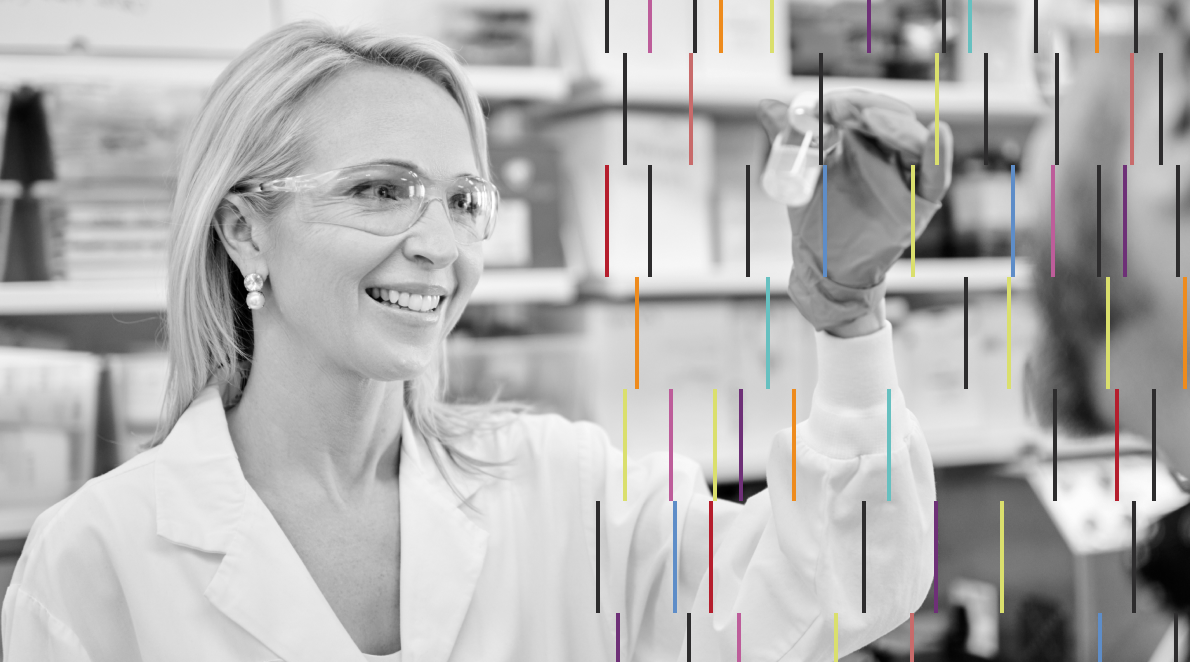Intrepid Labs emerged from stealth in May, announcing $11M in funding. In this feature, Intrepid Labs CEO and Co-founder Christine Allen explores how AI and robotics are transforming the critical field of drug formulation.
In the high-stakes world of pharmaceutical development, discovering a promising molecule is only the beginning. Before any drug reaches clinical trials, it must be carefully formulated into a safe, effective and manufacturable product, whether as a tablet, injection, nasal spray or other delivery format.
Drug formulation is more than mixing ingredients. It’s a multidimensional design challenge involving chemistry, materials science, pharmacokinetics, and manufacturing constraints. If a drug is the passenger, the formulation is the plane: it must deliver its cargo safely, reliably, and under extreme constraints. For something as “simple” as an oral tablet, there are billions of potential combinations of excipients and processing parameters that must be considered.
Traditionally, formulation R&D has relied on legacy know-how, guided trial-and-error, and incremental iteration. This creates a self-limiting cycle where researchers gravitate toward what has worked before, leaving vast unexplored territories in the formulation design space. The result is slower development, limited innovation and high clinical failure rates.
Incomplete and biased training data compound the challenge. Much of the industry’s proprietary formulation data remains locked away, and negative experimental data rarely sees the light of day. This creates a skewed perspective where AI models trained on available data miss the full complexity of drug formulation.
A New Approach: Self-Driving Labs Meet Drug Development
At Intrepid Labs, we have developed a fundamentally different approach. Our AI-driven robotic platform, Valiant, does not rely on massive historical datasets. Instead, it creates a closed-loop system that can start with no data and rapidly explore vast formulation spaces through intelligent experimentation.
Here is how it works: We input the target product profile for a specific formulation, the drug itself, and parameters for the formulation design space. Our proprietary algorithm then selects which formulation to prepare and test first. The automated platform creates and analyzes this initial formulation on a small scale, feeding the results back into the algorithm for retraining.
This iterative process continues through several batches, with each experiment informed by the results of the previous ones. Unlike traditional approaches that test one parameter at a time over months, we can optimize multiple characteristics simultaneously, from tablet size, hardness and stability to drug release profiles and material costs.
Beyond Speed: Reducing Clinical Trial Failures
This approach offers more than just speed. Better formulations could dramatically improve clinical trial success rates. Many promising drugs fail in clinical trials not because the active ingredient lacks efficacy, but because suboptimal formulations prevent the drug from reaching its therapeutic potential.
Our platform can also breathe new life into existing drugs. At Intrepid Labs, we are reformulating drugs that are already off patent or are about to go off patent, creating new formulations that outperform existing market standards.
The Future of Pharmaceutical Development
We are entering an era where the combination of AI and robotics can unlock formulation possibilities that were previously impossible to explore. The convergence of these technologies represents a new paradigm in pharmaceutical development, in which delivery format, dosing schedule, and patient experience can be intentionally designed from day one rather than constrained by historical precedent.
As we scale our platform and expand our partnerships with pharmaceutical companies of all sizes, we are working toward a future where the vast majority of clinical failures due to suboptimal formulations become a thing of the past.
Find out more in Intrepid’s announcement and website.
AI News This Week
-
How Managing Energy Demand Got Glamorous (The Economist)
Electricity demand is expected to surge by 25% by 2030, driven by AI data centers and digitalization. While building new power plants faces regulatory delays and costs, demand-side management through virtual power plants and distributed energy resources is booming. The acceleration of AI adoption makes reliable power critical, with companies prioritizing flexible customers for grid connections. Startups like Emerald AI are seizing on this opportunity, dynamically reducing AI data center power consumption by manipulating computational loads via AI software without compromising performance.
-
What’s Next for AI and Math (MIT Technology Review)
DARPA’s new expMath initiative aims to accelerate mathematical progress using AI coauthors. AI excels at pattern recognition and short solution paths but struggles with problems that require a long sequence of steps. Current AI tools show promise for exploration and generating new mathematical directions, but lack the creative insight needed for true breakthroughs. Researchers suggest that AI may serve as advance scouts for human intuition rather than replacing mathematical creativity entirely.
-
Can AI be Trusted in Schools? (The Economist)
A World Bank study tracked 422 secondary-school students in Nigeria who participated in six weeks of after-school sessions using Microsoft Copilot (GPT-4) to improve their English skills. Students in the AI tutoring group made two years of progress in six weeks, with test scores 10% higher than the control group. This $48-per-student pilot program outperformed 80% of over 230 other education programs in low and middle-income countries. These findings suggest AI tutoring could help address educational gaps in regions with resource constraints and a shortage of teachers.
-
Big Four Firms Race to Develop Audits for AI Products (Financial Times)
Major accounting firms are developing AI assurance services to verify the effectiveness and safety of artificial intelligence systems. The firms aim to leverage their financial audit expertise to assess AI tools in applications like self-driving cars and medical diagnostics. Demand for these services is expected most acutely from sectors like financial services and pharmaceuticals seeking regulatory compliance and consumer trust.
-
Research: Open-Ended Evolution of Self-Improving Agents (University of British Columbia/Vector Institute/Sakana AI)
Researchers have developed the Darwin Gödel Machine (DGM), a self-improving AI system that autonomously modifies its own code to enhance coding capabilities. Unlike theoretical approaches requiring mathematical proofs of improvement, DGM uses empirical validation through coding benchmarks. It doubled its coding performance on major benchmarks in experiments, demonstrating sustained self-improvement over 80 iterations. The system discovered transferable improvements, including enhanced editing tools, patch validation mechanisms, and workflow optimizations that generalize across foundation models and programming languages, suggesting the system discovers fundamental rather than superficial enhancements.
Radical Reads is edited by Ebin Tomy (Analyst, Radical Ventures)



